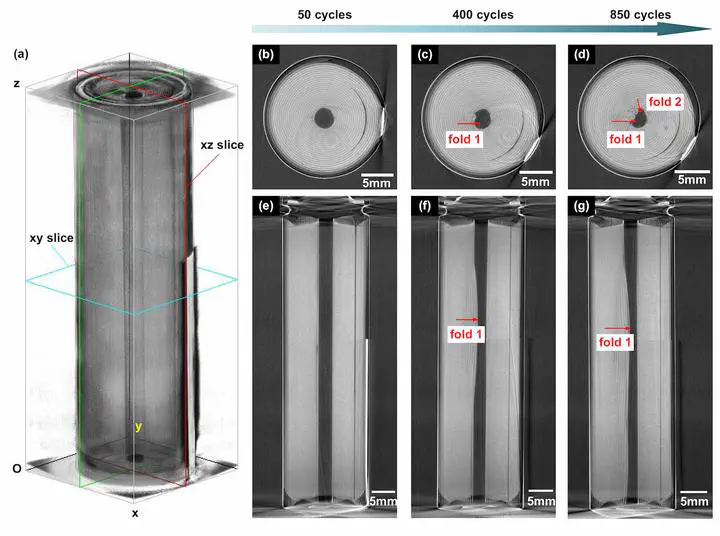摘要
Degradation diagnosis is essential for the safety of lithium-ion batteries. However, there lacks a method to provide detailed information about battery degradation mechanisms comprehensively. As an important product of electrolyte decomposition, internal gas evolution is rarely involved in degradation diagnosis. In this paper, internal gas evolution is evaluated based on X-ray computed tomography (CT), and used for degradation diagnosis by combination with internal resistances. Internal resistances are identified based on the equivalent circuit model (ECM) to describe different degradation mechanisms. Region of interest (ROI) volume of the tomogram, which reflects internal gas volume, is extracted to describe electrolyte decomposition using an X-ray CT. The proposed method is verified based on accelerated aging experiments and evaluation experiments of two batteries at different C-rates, whose results show that the tested batteries have different primary degradation mechanisms due to different degradation paths. It is recommended that the replacement of lithium-ion batteries adhere to the criteria of internal resistance and ROI volume change rates. The proposed method considers internal gas evolution and thus improves the effect of the degradation diagnosis in terms of degradation mechanisms.




